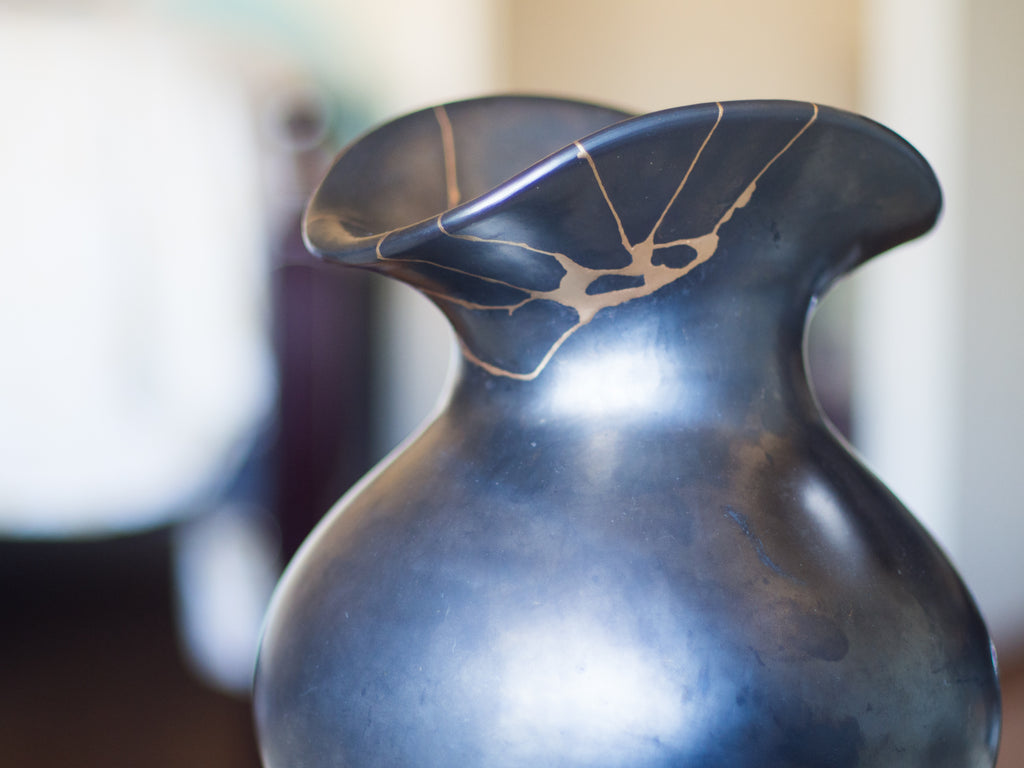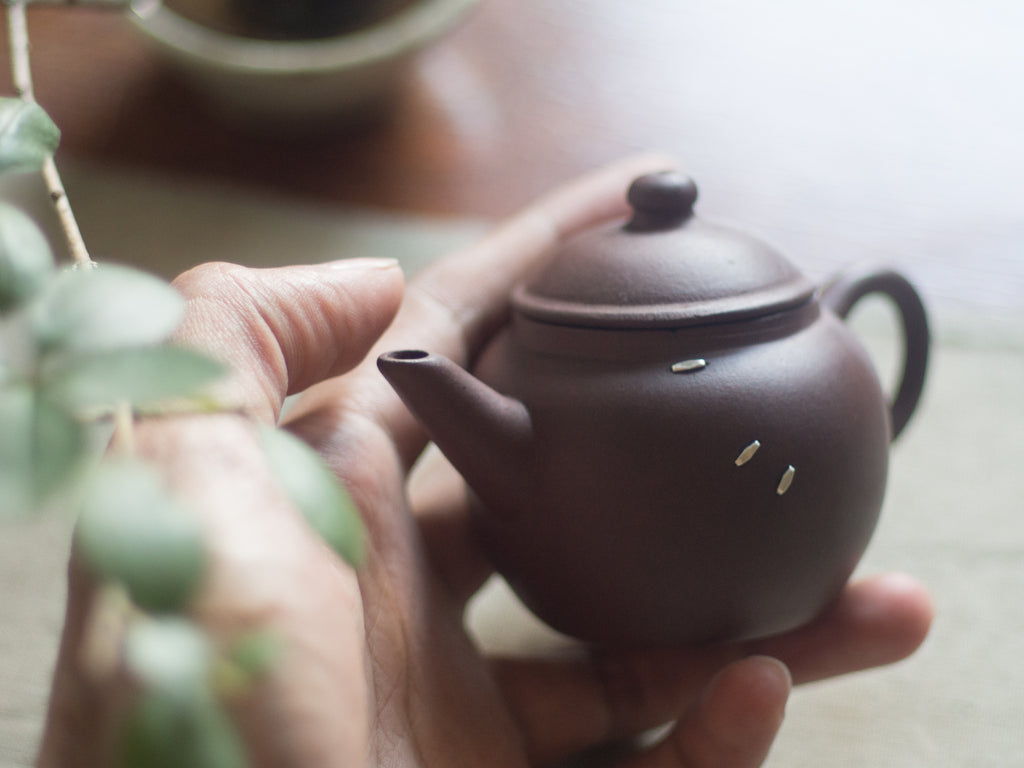
 When I started this series I was really interested in exploring varied approaches to mending, beyond needle and thread, so I'm really excited to introduce you to the work of New York based Nissan Haque, of Knjitea, who repairs teaware using traditional techniques like Japanese kintsugi, and metal staples, one of the oldest forms of pottery repair. By piecing broken pottery back together with pure gold, silver, and lacquers he creates functional art. It's a wonderful example of visible mending- where instead of masking a flaw, it is highlighted making the object that much more unique and beautiful.
When I started this series I was really interested in exploring varied approaches to mending, beyond needle and thread, so I'm really excited to introduce you to the work of New York based Nissan Haque, of Knjitea, who repairs teaware using traditional techniques like Japanese kintsugi, and metal staples, one of the oldest forms of pottery repair. By piecing broken pottery back together with pure gold, silver, and lacquers he creates functional art. It's a wonderful example of visible mending- where instead of masking a flaw, it is highlighted making the object that much more unique and beautiful.
I'm so grateful to Nissan for sharing his thoughts on tea, repair, work and his lovely images as well. Read on to learn more about this unique mending techniques and his love of tea.
1. How did you get started with mending?
I met my master in an antique shop while I was traveling through Taiwan, hoping to learn more about a beloved teacup. He, in turn, learned his craft from a Japanese master and went on to develop a style uniquely his own. We built a fast rapport over our mutual interest in tea, one that brought me into his home to share and learn more about antique teas. A year later, he offered me the opportunity to apprentice with him in the crafts of kintsugi, metal staple technique, and antique repair. I opened my own repair studio, Knjitea, after I returned to New York thefollowing year. Now I service the Western community using the traditions passed down from my master.
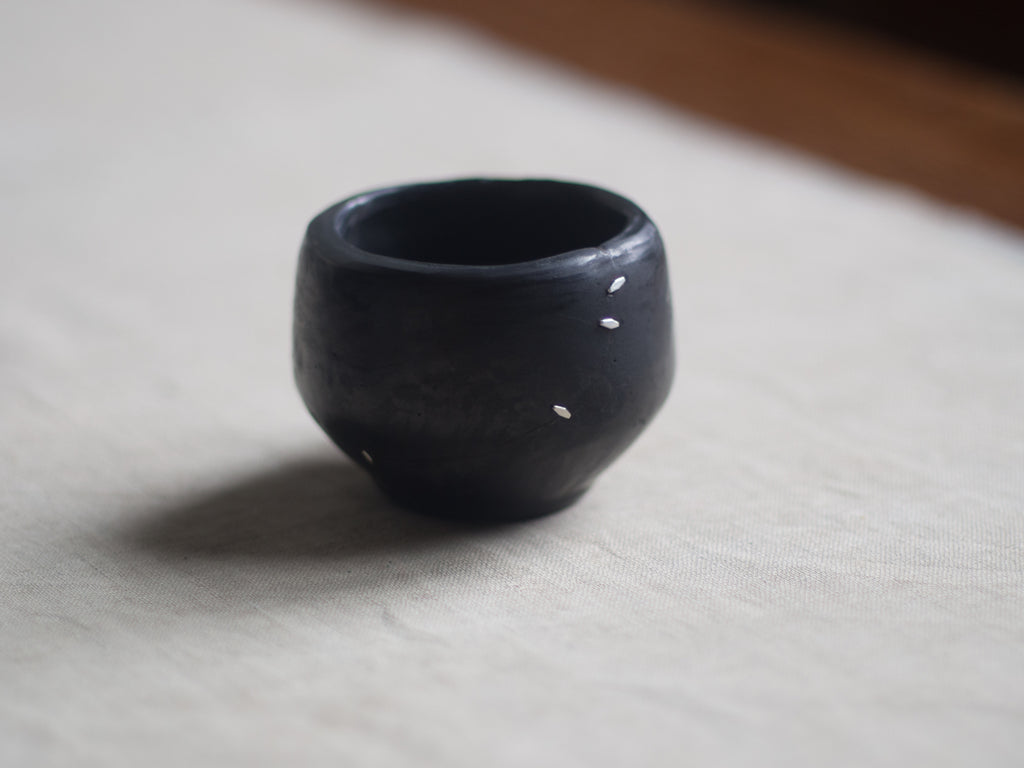
2. Tell us a bit about your process. How do you plan out a project or mend? What kind of materials do you use?
I always begin by trying to understand the importance of a piece to a person. Mending is a functional art and many of my clients wish to repair teaware to continue to use in their practice. I assess every piece to see what techniques would be best suitable, whether it is traditional kintsugi or metal staples, to bind the piece back together. Unlike the Japanese style of kintsugi where the gold lines are polished to a brilliance—highlighting the flaws of a broken piece—my style comes from a background in tea. I attempt to blend the repair into the piece, as if it has been repaired long ago and feels as though it has always been there. I use only traditional materials: pure gold, silver, and lacquers called urushi. Though these methods require a long time to fully cure, timelines are carefully managed to produce a finished piece that is food-safe and usable for tea. I also use silver, gold, or brass metal staples, the oldest form of pottery repair, to repair pieces as well.
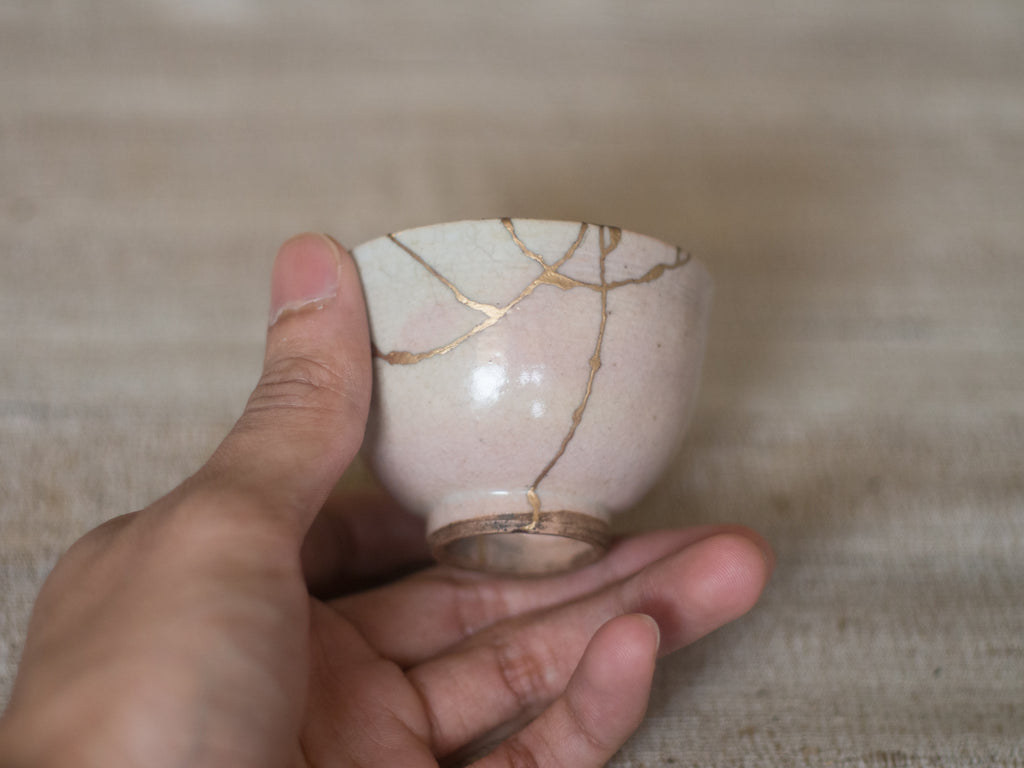
3. Hand work can take a fair amount of time and patience. How do you carve out time to mend?
I spend most of my day working on pieces. As this is my livelihood, I try to keep set hours for work—at times circumvented by the needs of individual pieces. However, carving out time to recuperate and regain insight on what I truly wish to create is equally important. Before painting the gold over the breaks, I like to give myself a moment to focus solely on tea. This eases my mind and steadies my hand.
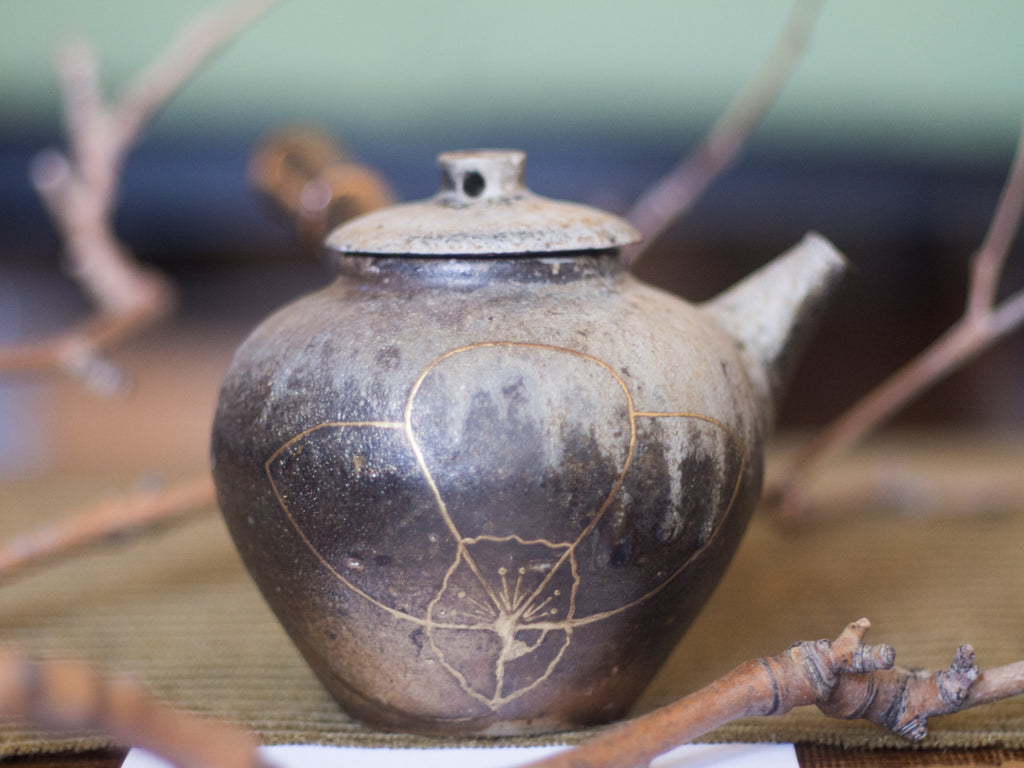 4. Are there any projects that you're particularly proud of? Maybe you tested out a new technique, had some breakthrough in your process, or just felt elated with the finished outcome.
4. Are there any projects that you're particularly proud of? Maybe you tested out a new technique, had some breakthrough in your process, or just felt elated with the finished outcome.
In the process of restoring the shell of a side-handled teapot, a plum flower with a missing petal emerged from the fault lines. The motif of a falling plum blossom expresses the beauty and fragility in life. Impermanence only gives life a richer meaning, inviting us to savor the intimate moments we share with our things. Making whole the breaks repaired the body—returning the last petal resurrected the soul. That petal is my belief in the soul of all things: in people, in tea, and in the gentle hearts of the teapots and plates we share our lives with.
 5. Besides mending what are some of your interests? What are some ways you incorporate the "mend and make do" ethos in other aspects of your daily life?
5. Besides mending what are some of your interests? What are some ways you incorporate the "mend and make do" ethos in other aspects of your daily life?
I also work at T Shop, a tucked away tea shop in Nolita, New York. I enjoy making tea. Slowing down to have tea allows us the space and time to look at our things closely: to feel them in our hands, to admire them and to treasure them. This led to an appreciation for antiques and I try as much as possible to use handcrafted pieces. Collecting antiques allows me to find new homes for old memories, connecting them with people who will hold them with love and care. I also find satisfaction in turning neglected trees into bonsai to be enjoyed for their unique history.
 6. Any upcoming events or projects you'd like to share?
6. Any upcoming events or projects you'd like to share?
I have been working on a series of ceramics for wedding kintsugi projects. A ceramicist produces a piece to be broken at the altar. The restored piece represents the unique stories of the lives newly entwined: stronger and more beautiful through the hardships they have faced. When I was first approached about it, I found it profoundly beautiful and I'm proud to be the restoration artist behind those pieces.
I am also moving my studio to a new location where it will sometimes be open to the public. I have a garden space where I will be building/creating a small tea house for people to sit, relax, and enjoy tea. You can follow its progress soon on my website, on my instagram, @knjitea or knjitea on facebook.
Thank you so much to Nissan for sharing his beautiful work, and thoughtful take on mending with me!
All images by Nissan.
